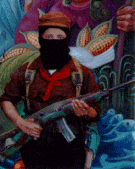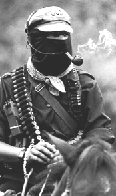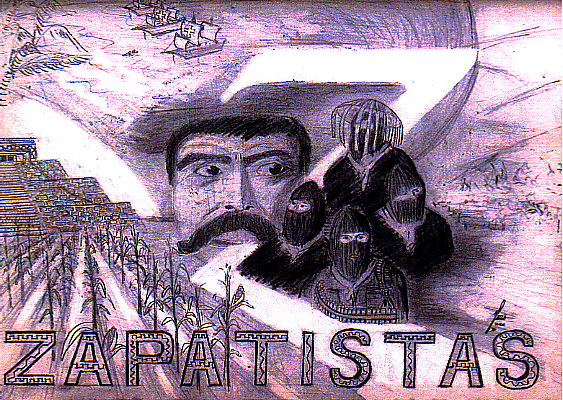

In their original declaration of war as well as other statements the Zapatistas have explained that their fight is for work, land, housing, food, health care, education, independence, liberty, democracy, justice, and peace. The Zapatistas have asserted on every occasion that only a complete metamorphosis of the political system will achieve these demands.
The Zapatistas are very unique since from the very beginning they have tried to make a broad exclusive movement. One way they tried to do this is by having various groups take up the struggle in their own ways. Even though the Zapatistas consist of several thousand armed soldiers, there are tens of thousands of villagers who support them. Also, unlike many other armed revolutionary movements, the Zapatistas have not attempted to take over any state power. For them, using arms was the only way to be sure that their message would be noticed. Since this was their only goal, they have refused to assert themselves as a political group or to try to get into office as many armed revolutionary's have done.
One of the key leaders of the Zapatista movement is Subcomandante Marcos, a mestizo who was educated in Mexico City but decided to move to the jungles of Chiapas. Marcos is the most publicized member of the group but he is not the sole leader. The movement is much more of a group effort.
 |
Subcomandante
|

For a little more information on the Zapatistas go to http://www.altculture.com/aentries/z/zapatistas/html
Catch a
Ride Back to the First Page
Pachakut'i
Cultural
Survival
Popular
Revolutionary Army
Shuar Federation
Confederation of Indigenous
Nationalities of Ecuador (CONAIE)
Coordination Indigena
de la Cuenca Amazonica (COICA)
Sandinista National Liberation
Front (FSLN)
Bibliography